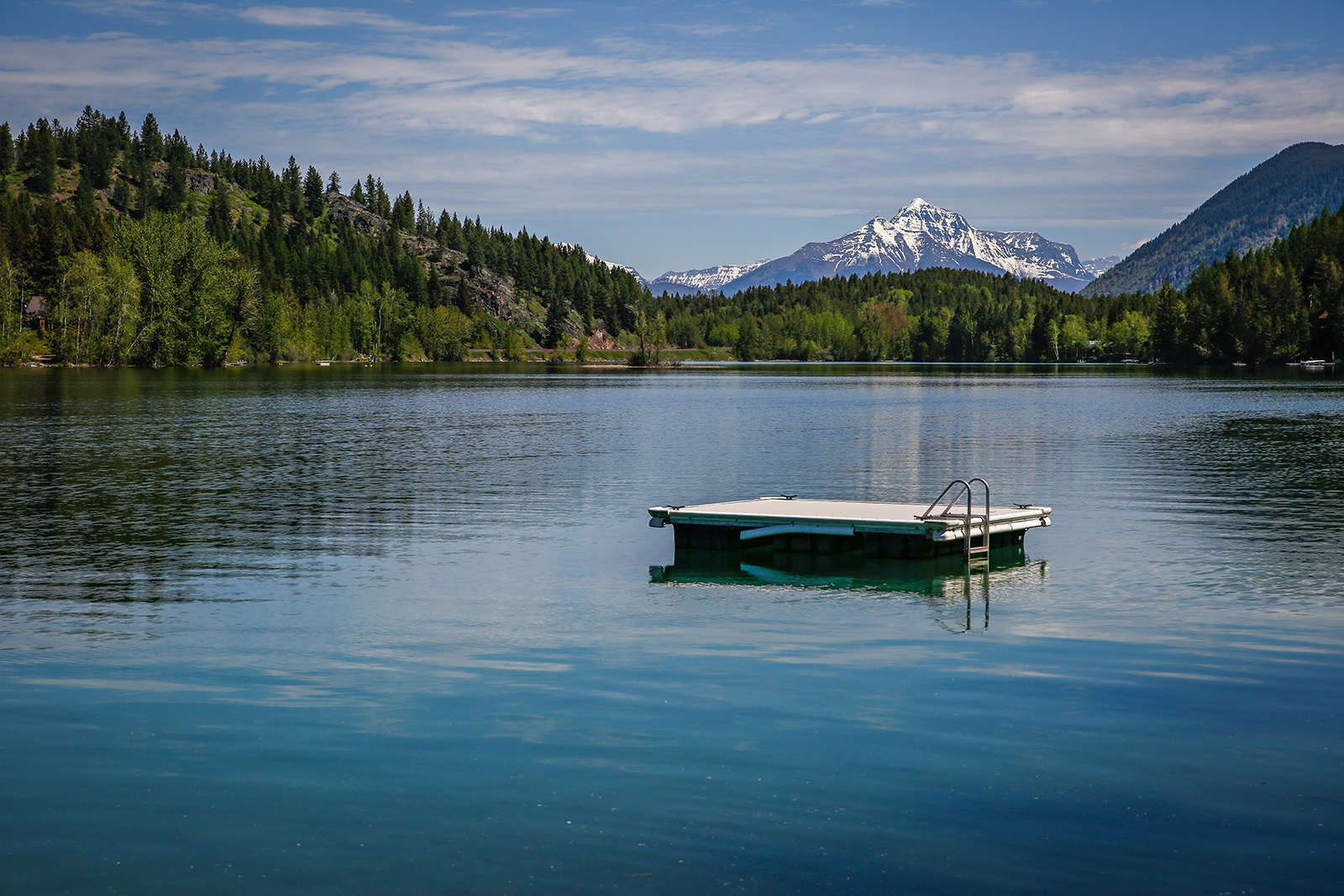A citizen work group is recommending the state’s Fish and Wildlife Commission adopt wake restrictions for boats on Lake Five near West Glacier.
The rulemaking authority of Montana Fish Wildlife and Parks (FWP) convened the newly formed citizen group on Sept. 5 to develop a proposed recreational boating rule in response to a petition submitted back in October.
The 10-person working group spent most of its meeting discussing concerns about wakeboat use on the small, 164-acre lake, before coming to a majority decision to recommend prohibiting wake surfing and wake-enhancement devices before July 1. After July 1, ballasts, wake enhancements and wake surfing would only be allowed between noon and 6 p.m.
Members of the group made suggestions ranging from not wanting any restrictions to an even narrower window of wake use, with seven members ultimately supporting the final proposal.
“I just don’t believe with the depth and width of Lake Five that we have adequate space for this,” Dan Simonson, who submitted the original petition along with Lindsay Bennett, told the group. “We don’t want to be told what to do, and I get it, but Lake Five is small. When you try to do it all on Lake Five, it does feel like we’re pushing too much.”
Simonson’s petition sought a “no wake” rule for all boats until July 15, along with a year-round ban on wake-enhancement devices such as ballast tanks, which would limit the lake to just water skiing, an idea that was moderated by the other group members who were not in favor of a complete ban on wake enhancement. While some group members pushed for a June 15 start date for wake surfing, they compromised on a July 1 opening, allowing for wakeboat use during the Fourth of July holiday weekend.
The concerns raised by Simonson and other members of the working group included water quality, the potential for shoreline degradation and impact to other recreational users, including swimmers and anglers, which is exacerbated due to the shape and size of Lake Five.
Lake Five is roughly 164 acres, but is a narrow, Y-shaped body of water that creates natural limitations to recreational use.
According to the Administrative Rules of Montana (ARM), lakes greater than 35 surface acres have statutory no-wake zones within 200 feet of the shoreline. However, eight lakes in Flathead and Lincoln counties are exempt from this rule, including Lake Five.
The widest part of Lake Five, at the center of the Y, is approximately 1,200 feet from shoreline to shoreline on either side. The ability for recreational boaters to approach within 200-feet of shoreline at wake-inducing speeds can create problems along the water’s edge.
“There are enough people who are concerned about erosion that we’ve seen with our own eyes, and obviously it’s not impacting people’s properties in the same way around the lake … it seems to me that we can give the lake a couple of extra weeks at the beginning of the season before it gets busy,” group member Suzy Boylan said.
The original petition submitted cited several studies showing a minimum distance of 500 feet is recommended to attenuate wave energy and reduce shoreline erosion from wake boats. In addition, water fluctuations along the shore can affect nesting waterbirds, including the Common Loon, which is listed as a species of concern in Montana. While a 2009 FWP conservation plan does not list Lake Five as a likely summertime breeding location for loons due to high levels of human disturbance and the lake’s size, the petition noted that a loon nest observed in the spring of 2022 failed, and a 2020 FWP survey documented one pair of loons on the lake.
Asked about enforcement mechanisms if the rule is adopted, FWP staff stated the rule would be added to the statewide boating regulations and signage would be placed at Paul’s Memorial Fishing Access Site. However, with 340 named lakes in the region, on-site enforcement would likely be limited.
Following the September working group meeting, the recommendation will go before the Fish and Wildlife Commission at its Oct. 19 meeting. Public comment on the recommendation can be submitted until Sept. 19, and there will also be a public comment period at the commission meeting.
